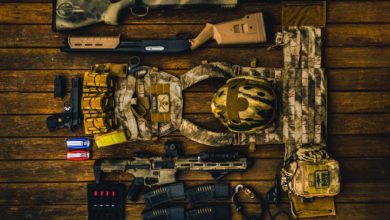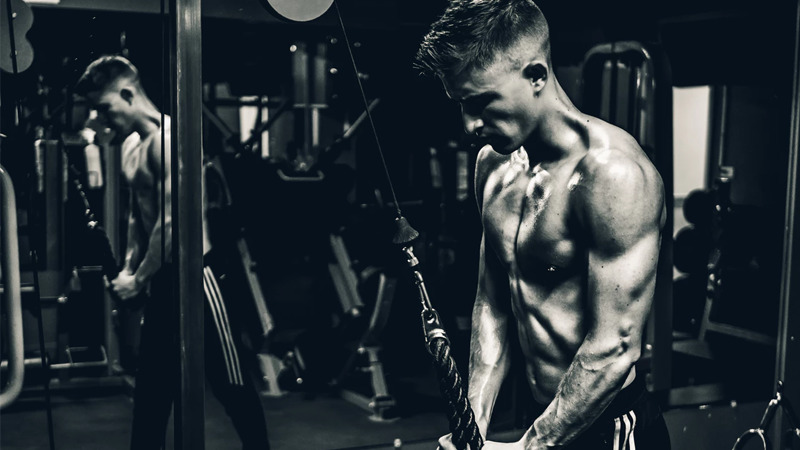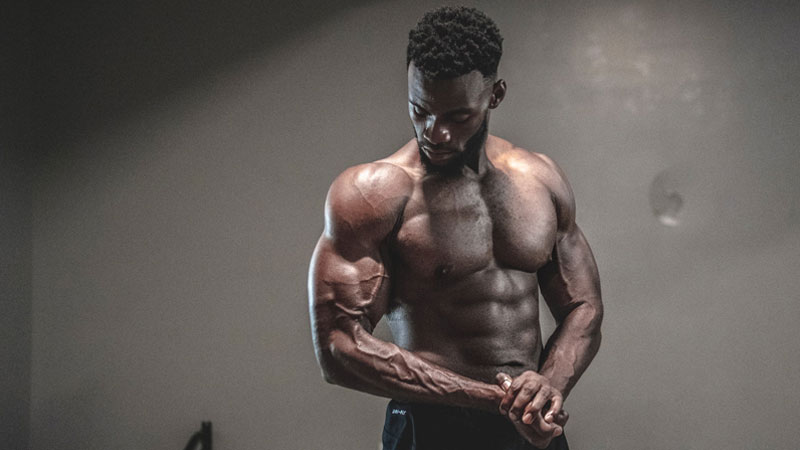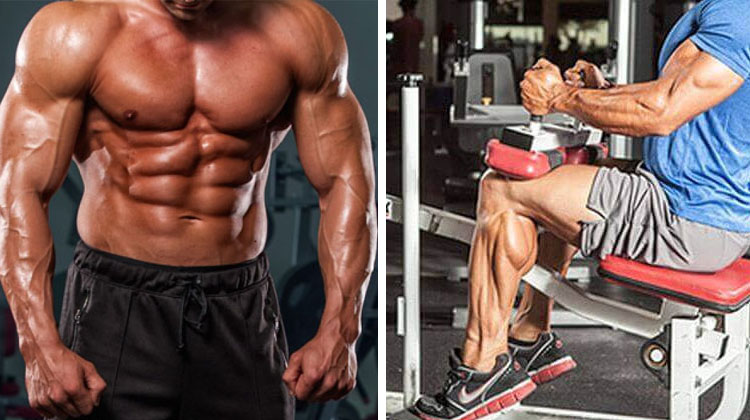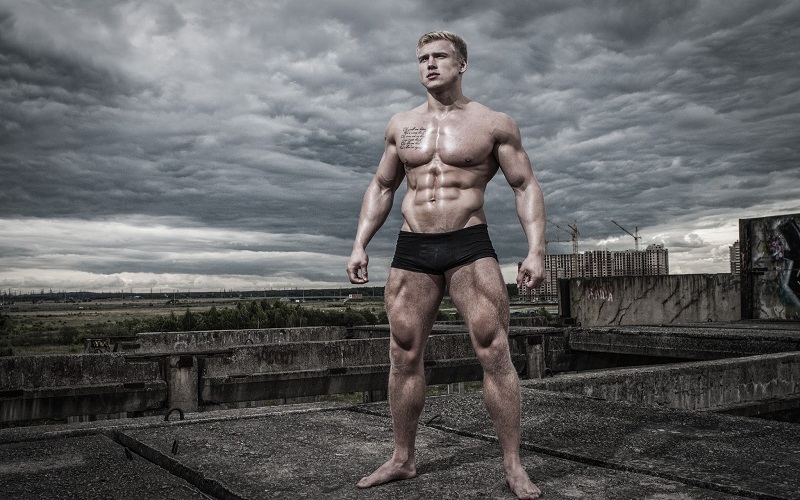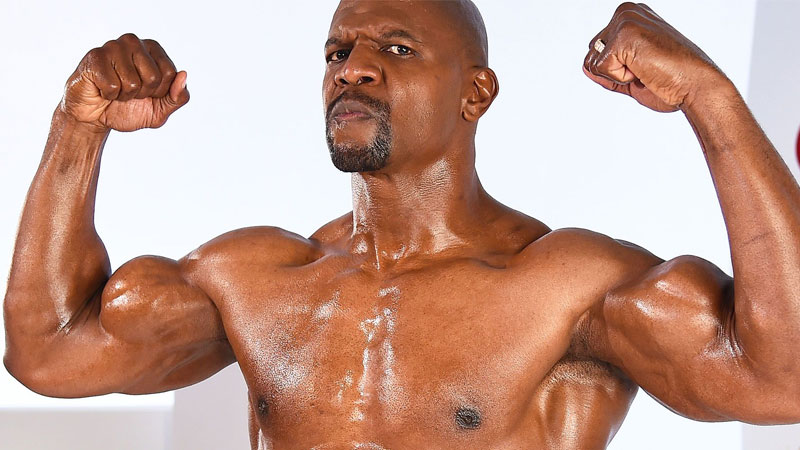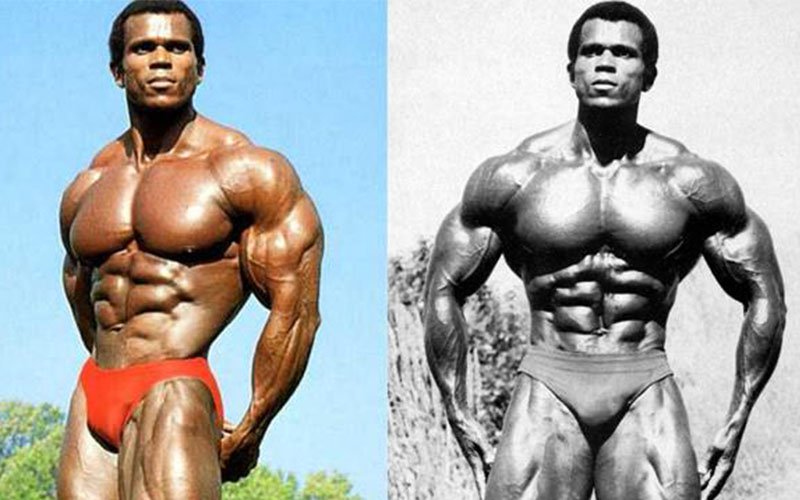
In the gym (and on the internet), bro science has kind of become the solution to all things pertaining to making gains. People are too lazy to do the research for themselves and instead take the word of Reddit user Tren_Dick_Giver81 or the dodgy locker room character with suspiciously red skin (probably from a damaged liver due to all the trenbolony sandwiches) who works out with a fanny pack. Yeah nah, any advice being spewed from these grunts should be disregarded before the first word even proceeds from their mouths.
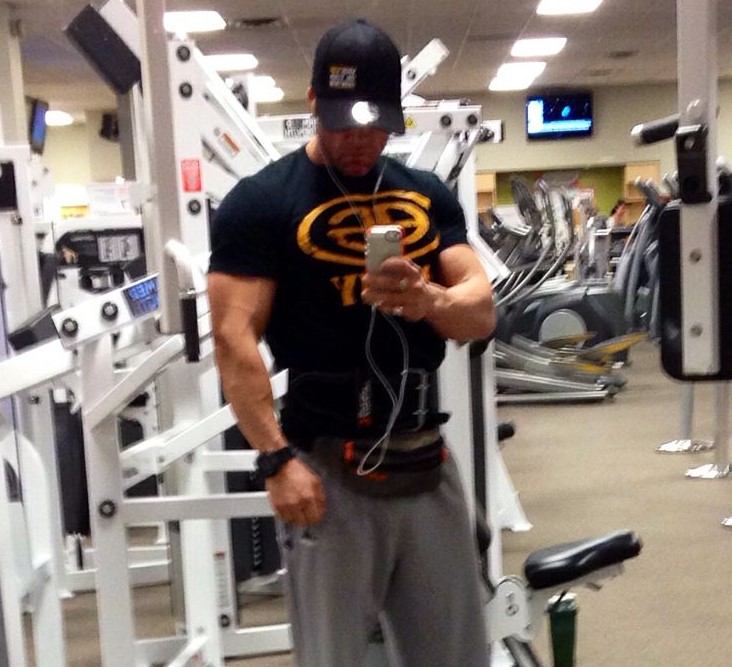
You ask them what exercise you should be doing and how you should be doing it for mad crazy gains. They’ll tell you to get the weight up no matter what. “How much weight should I use?” asked the natty gains-hungry boy. “As much you possibly can,” answered Anapoleon.
Now, what’s wrong with the advice above? Lifting as much as you can and getting the weight up “no matter what” is taking the express flight to Snap City and Broken Back Mountain. You don’t want that.

It’s time to dive into what the best exercises are for each muscle group and how to execute them with proper form for safety reason, and making sick gains, of course.
1. Deltoids
Military Presses (standing or seated)
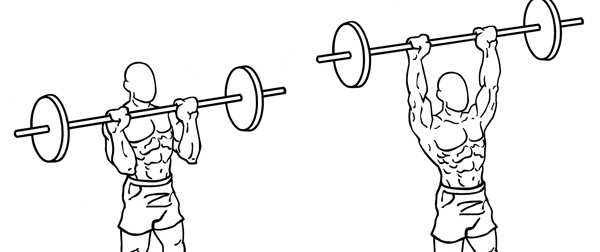
An amazing exercise and a feat of strength for the strongmen of old. Even today, if you’re able to press stupid amounts of weight over your head, you still qualify as a bowss.
Keep the back straight, and hold the bar with an overhand grip. When performing this exercise with a wider grip, the anterior and middle delts are more effectively targeted. If you’re lacking in the upper pec department, using a more narrow grip will help engage the clavicular head of the pec major, as well as the anterior head of the deltoid.
2. Pectorals
Barbell Bench Press

Picture credit to skinnytofit.com
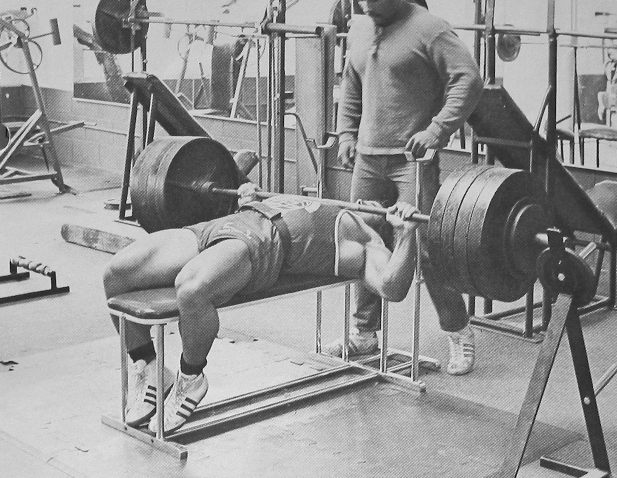
I can just hear all the gym rat and meatheads yelling “YAASSS!!” when they read the words bench and press. So, that means you must be doing something right, right?
With bench presses, it’s not simply moving the bar up and down, but making small adjustments help improve both your strength and hypertrophy.
For starters, lay with your back flat on the bench while keeping your feet intact with the floor. Grip the bar slightly wider than shoulder-width. Pinch your scapulae together and press them down towards your ass. Lift the bar from its hinges and slowly lower the weight to your chest, then press the bar back up without locking the elbows. Try imagining yourself pushing your elbows towards each other; this will create a mind-muscle connection with your pecs.
Flat Bench Dumbbell Fly
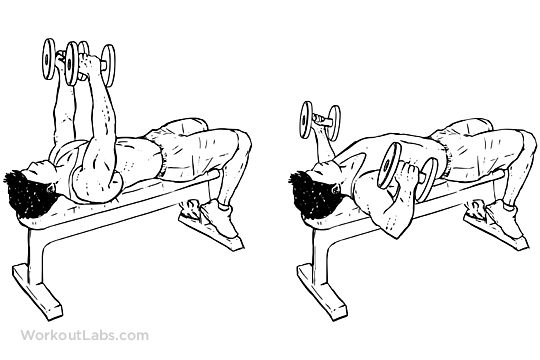
Like the bench press, you’ll want to keep your back in contact with the bench and your scapulae pinched through the whole movement. Something that I like to do which really helps to isolate the pecs is to rest my feet on the bench as well. Try it, you’ll thank me. However, I don’t advocate it if you’re going to train your ego by doing heavy-ass fly’s. Or maybe you should — natural selection might just take place.
Parallel Bar Dips
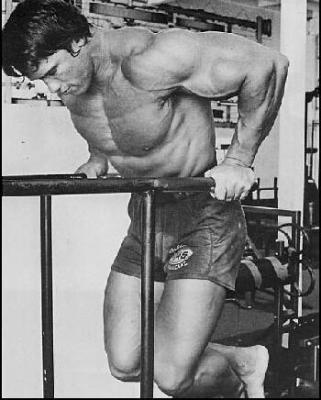
Back in his prime, Arnold loved to finish his chest routine off supersetting cable crossovers with dips. But dips on its own—if performed properly—can have a wonderfully painful effect on your pecs.
An effective way of performing dips is by extending your legs in front you creating something of an L-shape. When performed this way, the outside of the lower pecs are quite fiercely targeted, especially if you squeeze for a second or two at the top of the movement.
3. Back
Deadlifts
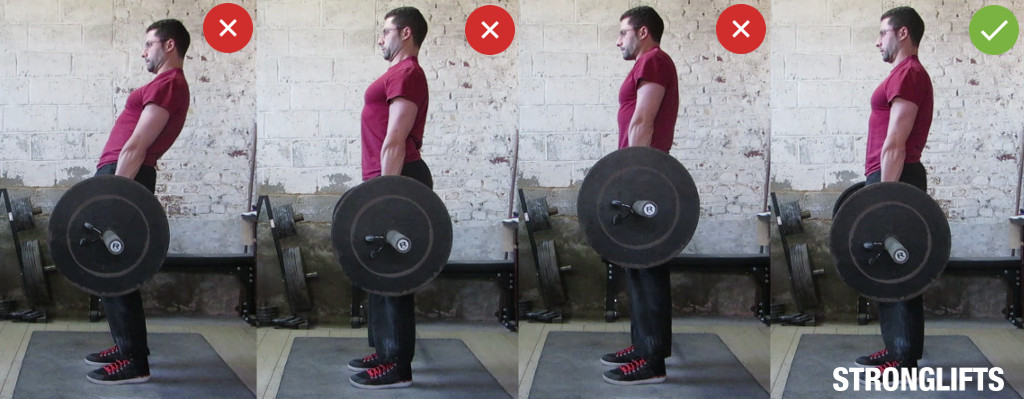
Deadlifts are my all-time favorite back exercise. Period.
To execute them with proper form, keep your feet about shoulder-width apart with toes pointed slightly outwards. Grip the bar with an over-under grip so that the bar doesn’t roll out of your hands, especially when lifting heavy. Keep your back straight, and your scapulae pressed together. Lift the bar by doing a standing movement, and keep the bar close to your body as you possibly can.
Bent-over Barbell Row
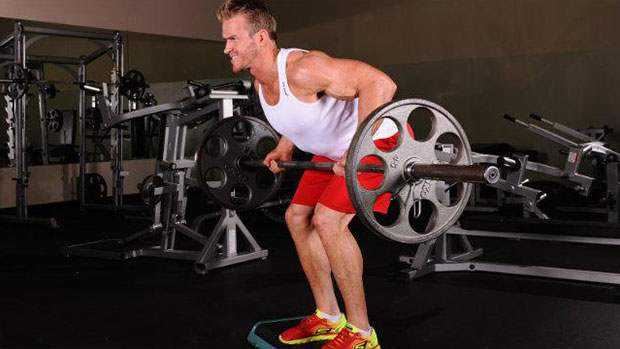
This exercise is particularly effective when you use an underhand grip.
Begin by placing your feet within your shoulder-width and grab the bar slightly outside of your shoulder width. Stand up with the bar in your hands (kind of like performing a deadlift) and slowly lower your torso to be just above parallel to the floor, all while maintaining a straight back. Pull the bar up to your bellybutton, but try to pull the bar from your elbows, not your hands. Thinking like this will also help with the mind-muscle connection.
4. Arms
Barbell Curls
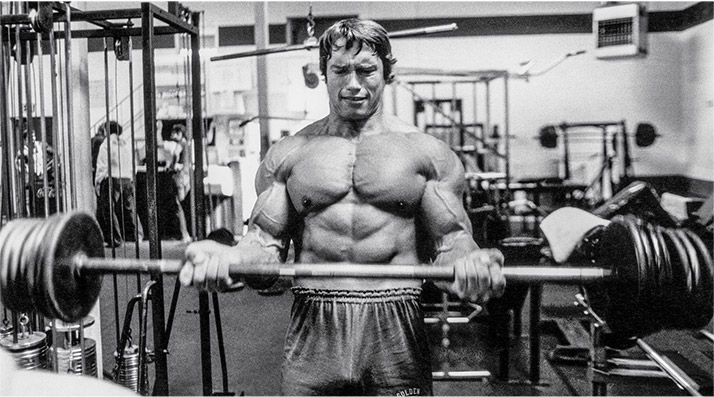
And there the bros go cheering again. What’s better than seeing your favorite exercise on a list of best exercises? Nothing, really.
With most exercises, you’ll notice that I recommend you pinch your scapulae together. Trust me, it makes all the difference. You don’t have to take my word for it — just go and try it.
With barbell curls you should also keep your scapulae together during the whole movement. Keep your elbows tucked into your sides. A trick I like to use is to lean a little forward as I curl the barbell up while keeping my elbows pointed toward the floor. This mimics the isolation found with the concentration curl.
Preacher Curls
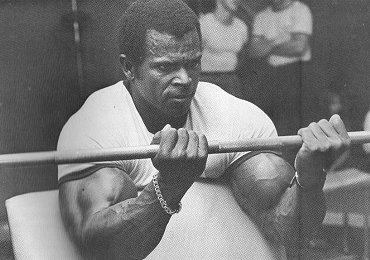
This is another great exercise that has built some of the best arms over the years. The first Mr. Olympia, Larry Scott, was an advocate of preacher curls, and as you might know, his arms were full and well-developed — especially his biceps.
There’s not much to this exercise other than curling the weight up. You don’t have to worry about keeping your scapulae together on this one. Just be sure to not let your arms fully extend as this will cause strain on the elbow joint.
Close-grip Bench Press
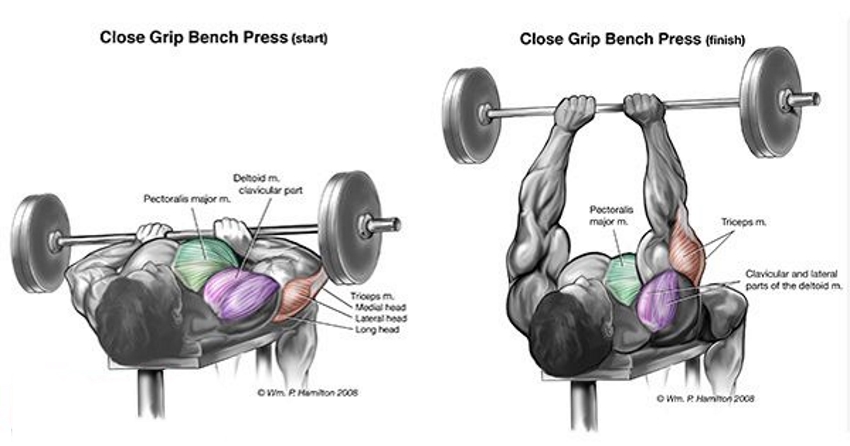
Undoubtedly my favorite triceps exercise, and with good reason, too. Most people don’t know how to perform this movement, and thus end up with overly developed anterior deltoids.
Grab the bar just inside shoulder width, and again, pinch the shoulder blades together. Lift the bar off its hinges and lower it in-line with your mid-pecs. Don’t lower the bar all the way down to your chest, instead, stop about 6-8 inches above your chest. And just like the bench press, picture yourself bringing your elbows together.
Seated Overhead Dumbbell Extension
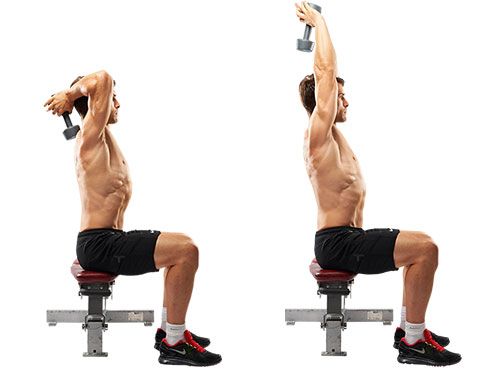
Don’t worry, no squeezing of the scapulae needed here. Although many perform this exercise with an EZ bar, I’ve found a dumbbell to be more effective.
When lowering the dumbbell, don’t lower it past the point of your forearms being parallel to the floor. By doing this you ensure that the tension is kept on your triceps.
5. Quads
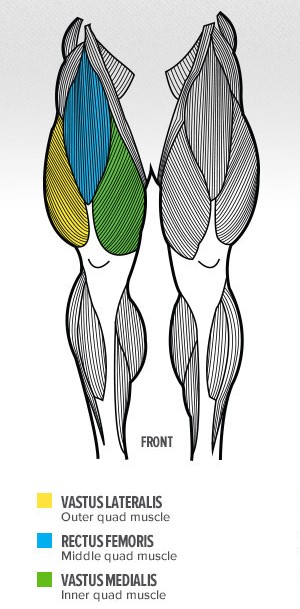
Barbell Squats
The king of all leg exercises. Quite frankly, squats don’t just target the quads. Instead, they also have a great effect on the glutes and hamstrings, which is why I’ll include squats under those two muscle groups as well.
To ensure you squat with more of the emphasis on the quads, place two 2.5 pound plates underneath your heels. For greater effect, you could even use 10-pound plates. Squat with your feet about hip-width apart to place extra emphasis on the vastus lateralis (outer quad), and with your feet wider than shoulder width to hit the vastus medialis (inner quad).
Leg Extensions
Although leg extensions can’t be considered to be a muscle building exercise per se, it does still have its uses.
Like with squats, the wider your feet are on underneath the pad, the more engagement from the inner quad. The closer your feet are, the more the outer quad is hit.
6. Glutes
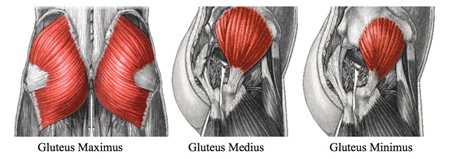
As stated above, squats also help develop the glutes, and so, I’ll add it but won’t explain it again.
Barbell Squats
Walking Lunges
When it comes to developing the glutes to super Saiyan-level, walking lunges are the way to go — just ask eight-time Mr. Olympia, Ronnie Coleman.
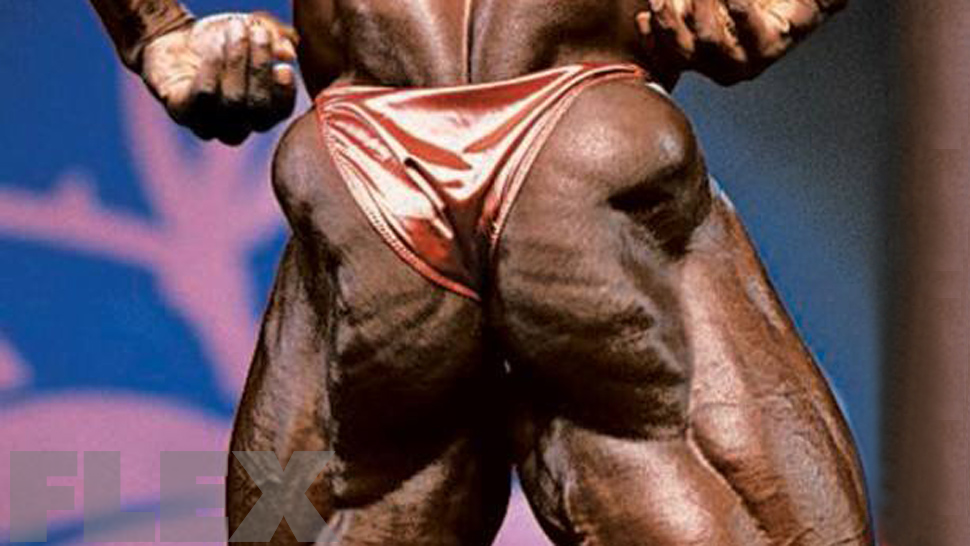
Stiff Leg Deadlifts
A variation of the standard deadlift. Instead of moving up and down as in standing up and almost crouching down again, the stiff leg deadlift is exactly what the name implies. Keep your legs slightly bent during the whole movement of the exercise. Lower the bar to mid-shin or just above so that you don’t risk your back rounding out.
Barbell Hip Thrusts
Probably not the manliest exercise for dudes to be doing, but who cares? Chicks dig a man with a grabbable ass. I know my girl does.
To perform hip thrusts, rest with your upper back on a bench and your feet on the floor. Rest a barbell over your pelvis, and push your hips upwards while contracting your glutes at the top of the movement.
7. Hamstrings
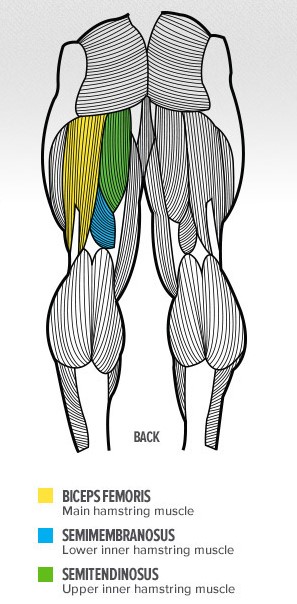
Barbell Squats
Walking Lunges
Stiff Leg Deadlifts
Lying Leg Curls
Although lying leg curls are typically done by resting your entire body on the machine’s bench, but what some don’t know, is that when you press your upper body up (like a static push-up), you’re able to isolate the biceps femoris quite well. For those of you who are unaware, the biceps femoris is that big piece of meat that hangs from your leg when hitting a side chest pose. Just so you know.
